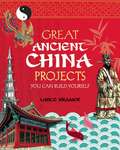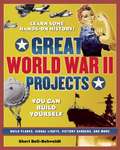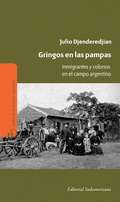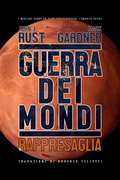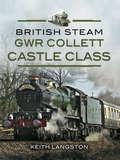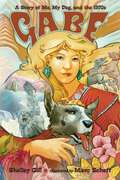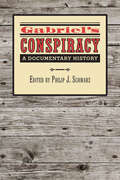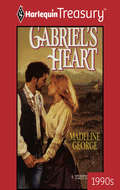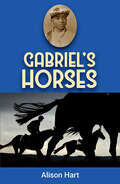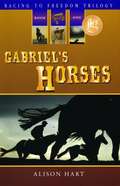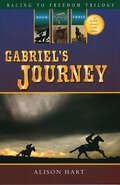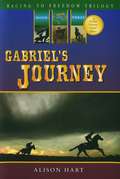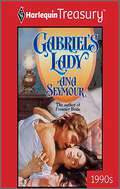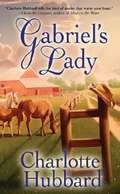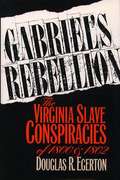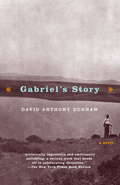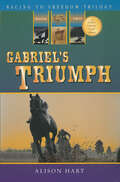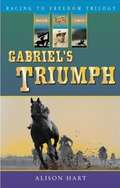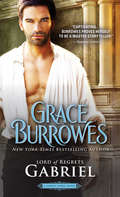- Table View
- List View
GREAT ANCIENT CHINA PROJECTS
by Steven Weinberg Lance KramerGreat Ancient China Projects You Can Build Yourself explores the incredible ingenuity and history of ancient China with 25 hands-on projects for readers ages 9 and up. Great Ancient China Projects covers topics from porcelain pottery, paper, gunpowder, and dynasties, to martial arts, medicinal healers, jade carvers, and terracotta warriors. With step-by-step activities, kids will learn how to construct a house with proper feng shui and create a simple Chinese hanging compass. Historical facts and anecdotes, biographies, and fascinating trivia support the fun projects and teach kids about this innovative society and its continued influence on modern culture.
GREAT PIONEER PROJECTS
by Shawn Braley Rachel DickinsonWhat was it like to be an American pioneer during the 1800s? Great Pioneer Projects You Can Build Yourself introduces readers ages 9 and up to the settling of the great American frontier with over 25 hands-on building projects and activities. Young learners build replica sod houses, log cabins, and covered wagons and create their own printing presses and maps. Great Pioneer Projects You Can Build Yourself provides detailed step-by-step instructions, diagrams, and templates for creating each project. Historical facts and anecdotes, biographies, and fascinating trivia support the fun projects and teach readers about the American pioneers' relentless push westward. Together they give kids a first-hand look at daily life on the trail and on the frontier. Great Pioneer Projects You Can Build Yourself brings the American Pioneer experience to life.
GREAT WORLD WAR II PROJECTS
by Sheri Bell-RehwoldtFrom spy maps and victory banners to spotter planes and ration cakes, Great World War II Projects You Can Build Yourself brings one of the most defining periods of American and world history to life through hands-on building projects and activities. Detailed step-by-step instructions for creating each project combine with historical facts and anecdotes, biographies, and trivia about the real-life models. Together they give kids a first-hand look at daily life at home and on the front lines during America's war years.
GRINGOS EN LAS PAMPAS (EBOOK)
by Julio DjenderedjianQué fue lo que llevó a millones de hombres y mujeres de todo el mundo a migrar a la Argentina, hace ya más de un siglo? Cómo se enteraron de que existía ese país campesinos que muchas veces no sabían leer y nunca habían salido de su aldea natal? De qué modo viajaron, trabajaron y vivieron en su nuevo hogar? Cómo lograron adaptarse a un medio tan distinto del que provenían? Este libro aborda la compleja historia de esos hombres y mujeres, que se atrevieron a desafiar la incertidumbre de irse al otro lado del mundo abandonando familia, amigos y todo lo que más querían, para poder cumplir un sueño. El sueño de trabajar duro pero no en vano; de poder contar con que su esfuerzo les permitiera ahorrar, asegurar su futuro y educar a sus hijos. Muchos de esos inmigrantes se transformaron en colonos: fueron al campo, a poblar la inmensidad de las pampas, a arrastrar el arado desde antes de la salida del sol, a cultivar, sembrar y cosechar. Aquí se narra cómo fue que, con su trabajo, fundaron pueblos y ciudades, renovaron las formas de producir, dieron valor a las tierras y lograron que la Argentina se convirtiera, en sólo unas pocas décadas, en uno de los principales productores mundiales de alimentos.
GUERRA DEI MONDI: RAPPRESAGLIA
by John Rust Mark Gardner1898: i tripodi marziani devastano le città della Terra. Gli eserciti di tutto il mondo sono incapaci di fermare l'ondata di distruzione. Quando ogni speranza sembra perduta, dei comuni batteri uccidono gli invasori alieni. Risorgendo dalle proprie ceneri, la razza umana usa la tecnologia lasciata dai marziani per costruire nuove e più avanzate armi. 1924: armate di astronavi, tripodi e caccia, le nazioni della Terra sono pronte a combattere contro Marte. George Patton, Erwin Rommel, Charles de Gaulle e Georgy Zhukov guidano le loro truppe in battaglia sul pianeta rosso, per porre fine alla minaccia aliena una volta per tutte. Ma i marziani hanno un ultimo, disperato, piano per cercare di vincere; se ci riuscissero, sarebbe la fine per il genere umano.
GUERRA EN LA SANGRE, LA (EBOOK)
by Hernan OteroCuál fue el impacto de la Gran Guerra de 1914-1918 en la Argentina? Cuáles fueron los argumentos que dividieron a la sociedad a favor y en contra de la neutralidad de Yrigoyen? Qué acciones llevaron a cabo las comunidades migratorias? Qué razones impulsaron a miles de extranjeros y a sus hijos argentinos a combatir o a rechazar abiertamente el impuesto de sangre? Partiendo del grupo francés, caso límite en la respuesta a la movilización militar, y de documentación inédita de archivos militares y diplomáticos, el libro analiza la anatomía de la decisión que desgarró a las comunidades, a los migrantes y a sus familias. Punto de encrucijada entre la historia cultural de la guerra, la historia de las migraciones y la historia diplomática, el texto aborda asimismo el rol de los diplomáticos extranjeros para doblegar la neutralidad; la integración de los inmigrantes europeos hacia el Centenario; el rol de la mujer; los conflictivos vínculos entre consulados e inmigrantes; las tensiones entre el derecho del suelo y el derecho de sangre; los dramáticos efectos de la guerra sobre las comunidades vencedoras y derrotadas; y los límites de cualquier definición sencilla de la nacionalidad y de la identidad de las personas.
GWR Collett Castle Class: Gwr Collett Castle Class (British Steam)
by Keith LangstonThe 'Castle' class 4-6-0 locomotives designed by Charles Collett and built at Swindon Works were the principal passenger locomotives of the Great Western Railway. The 4-cylinder locomotives were built in batches between 1923 and 1950, the later examples being constructed after nationalisation by British Railways. In total 171 engines of the class were built and they were originally to be seen at work all over the Great Western Railway network, and later working on the Western Region of British Railways. The highly successful class could be described as a GWR work in progress, because further development took place over almost all of the locomotives working lives. In addition to inspiring other locomotive designers the 'Castle' class engines were proved to be capable of outstanding performances, and when introduced were rightly described as being 'Britain's most powerful passenger locomotives'. Some of the 'Castles' survived in service for over 40 years, and individually clocked up just a little short of 2 million miles in traffic. In this book, Keith Langston provides a definitive chronological history of the iconic class together with archive photographic records of each GWR 'Castle' locomotive. Many of the 300 plus images are published for the first time. In addition background information on the origin of the names the engines carried, including details of the many name changes which took place, are also included. The extra anecdotal information adds a fascinating glimpse of social history. Collett CASTLE Class is a lavishly illustrated factual reference book which will delight steam railway enthusiasts in general and in particular those with a love of all things Great Western!
Gabby
by Jeffrey Zaslow Mark Kelly Gabrielle GiffordsComo individuos, la congresista Gabrielle Giffords y su esposo, el astronauta Mark Kelly, demostraron a los estadounidenses cómo el optimismo, el espíritu aventurero y el llamado al servicio pueden ayudar a cambiar el mundo. Como pareja, se convirtieron en un ejemplo nacional del poder sanador que puede encontrarse en la valentía y el amor profundamente compartidos. Su llegada al centro de atención mundial se dio en la peor de las situaciones. El 8 de enero de 2011, al reunirse con sus electores en Tucson, Arizona, Gabby fue víctima de un atentado que dejó seis muertos y trece heridos. Los médicos dijeron que era un "milagro" que hubiera sobrevivido. Íntima, inspiradora, conmovedora e inolvidable, Gabby: Una historia de valor y esperanza cuenta la vida de estas dos personas extraordinarias. Lleva a los lectores detrás de muchas puertas cerradas: a la plataforma de lanzamiento del transbordador espacial, a los vestuarios del Congreso, y a las salas de hospital donde Gabby luchó para recuperarse con la ayuda de formidables equipos médicos y de familiares y amigos dedicados. Gabby: Una historia de valor y esperanza es un recordatorio del poder que tienen la valentía y la paciencia en la superación de obstáculos inimaginables, y de la trascendencia del amor.el about the angry political discourse that was swirling in America at the time of the shooting, and that remains prevalent today? How do they see government living up to the highest possible ideals? And how do they understand and mourn the loss of the people who did not survive that day? Gabby: A Story of Courage and Hope is a reminder of the power of true grit, the patience needed to overcome unimaginable obstacles, and the transcendence of love. In the story of Gabrielle Giffords and Mark Kelly, we all can see the best in ourselves. As Mark and Gabby's friends have said: "The two of them are America as we dream it can be."
Gabe: A Story of Me, My Dog, and the 1970s
by Shelley GillComing of age in the Age of Aquarius. Author Shelley Gill was seventeen-years-old in 1972 and a free spirit protesting the Vietnam War, marching for civil rights, and finding her way in a changing world. While volunteering in the medical tent at the first Rainbow Gathering in Granby, Colorado, Shelley met Gabe—a blue merle husky mix puppy abandoned by his owner. Gabe quickly became Shelley&’s best friend and protector. They travelled the country together, hitchhiking to New Orleans, to Indiana, to New York City, to the Rocky Mountains, and eventually to Alaska, where they stayed. Shelley Gill has lived full-force, grabbing life by the horns and not letting go. Her spirit and attitude are ever-present in this autobiography, which is a snapshot of a turbulent time in American history, as well as a love-letter to cherished dog.
Gabriel
by Grace BurrowesAfter years in hiding, when Gabriel Wendover leaves behind the woman he loves to resume his place as Marquis of Hesketh, he finds the lady herself already ensconced his household, and the mysterious danger still stalking him. Gabriel loves Polonaise Hunt (Polly) and is both upset and thrilled to find that she's been hired by his brother to paint the family portraits. He must keep himself, his brother and Polly safe, but there's nothing he can do to safeguardhis own heart#133;
Gabriel's Bride
by Samantha JamesA brooding Earl’s revenge leads to seduction with an American tavern wench in this scandalously sexy Regency romance.Trapped by duty—and by the demands of his cruel, unyielding father—Lord Gabriel Sinclair is being forced to find a bride. But the dark and moody Earl of Wakefield plans an exquisite revenge on his cold-hearted parent: wedding the sultry, low-born Yankee who tried to steal his watch. Ragged and beautiful, Cassie McClellan is desperate to escape her life of poverty—and, therefore, willingly accepts the handsome, arrogant aristocrat’s offer of marriage in name only. But neither is prepared for the awakening passions that will bind their fragile, damaged hearts—or the blistering, sensual need that compels them both to surrender body and soul.
Gabriel's Conspiracy: A Documentary History (Carter G. Woodson Institute Series)
by Philip J. SchwarzThe plans for a large slave rebellion in the Richmond area in 1800, orchestrated by a literate enslaved blacksmith named Gabriel, leaked out before they could be executed, and he and twenty-five other enslaved people were hanged. In reaction to the plot, the Virginia and other legislatures passed restrictions on free blacks, as well as on the education, movement, and hiring out of the enslaved. Although Gabriel's conspiracy is well known among historians, documents relating to it have remained relatively inaccessible. In Gabriel’s Conspiracy, Philip J. Schwarz offers a valuable selection of the documents discovered to date. Together with Michael Nicholls’s complementary book, Whispers of Rebellion (Virginia), these volumes offer a complete account of the quashed slave conspiracy.
Gabriel's Heart
by Madeline GeorgeHe'd Set His Sights On Vengeance, But Was Blindsided By Love Or lust. Or something mighty powerful. Whatever it was, Gabriel Hart felt pulled toward Trina McCabe, a feisty miss with the prettiest pout in the West. But he'd be damned if he'd let her sass and charms sidetrack him from getting his just revenge! A man with a mission, a man with a past, Gabriel Hart made Trina McCabe's pulse pound in echo to their train's thundering roar. Now, if only the former lawman could see how much he needed her, they'd be on board the Paradise Express!
Gabriel's Horses (Racing to Freedom #1)
by Alison HartIn 1864 Kentucky, an enslaved boy dares to pursue his dream of becoming a jockey.Twelve-year-old Gabriel loves to help his father—one of the best horse trainers in Kentucky—care for the thoroughbred racehorses on Master Giles's farm until the violence of war disrupts their familiar daily routine. When Gabriel's father enlists in a Colored Battalion, Gabriel is both proud and worried. But his father's departure brings the arrival of Mr. Newcastle, a white horse trainer with harsh, cruel methods for handling both horses and people.Now it is up to Gabriel to protect the horses he loves from Mr. Newcastle and keep them safely out of the clutches of Confederate raiders.In this first book in the Racing to Freedom trilogy, Alison Hart explores the complex relationships of the Civil War in a gripping work of historical fiction. The result is a gripping story that vividly brings to life the danger and drama of a time when war and issues of race and freedom divided the country. Background historical material and photos are included.
Gabriel's Horses (Racing to Freedom Trilogy #1)
by Alison HartThe year is 1864 and twelve-year-old Gabriel hopes to one day become a famous jockey. Although he is the son of a free black father and a slave mother -- making him a slave as well -- he loves to help his father, one of the best horse trainers in Kentucky, care for the thoroughbred racehorses on Master Giles's farm. But the violence of war disrupts the familiar routine of daily life on the farm. One-Arm Dan Parmer and his band of Confederate raiders are threatening area farms and stealing horses. When Gabriel's father enlists in a Colored Battalion to help the Union Army and earn enough money to purchase freedom for his wife and son, Gabriel is both proud and worried. But the absence of his father brings the arrival of Mr. Newcastle, a white horse trainer with harsh, cruel methods for handling horses... and people. Now it is up to Gabriel to protect the horses he loves from Mr. Newcastle and keep them safely out of the clutches of One-Arm Dan and his men. Author Alison Hart mines the complex relationships between white and black, slave and master, Unionist and Confederate, and old and young in this gripping work of historical fiction.
Gabriel's Journey (Racing to Freedom #2)
by Alison HartTwelve-year-old Gabriel is too young to join the fifth U.S. Colored Calvary of the Union Army, his father's regiment, as a soldier in the Civil War. He finds a job as personal groom to Champion, the unruly horse that belongs to Colonel Waite, the white commander. The Calvary receives orders to join white regiments in an attack on the Virginia salt works, so Gabriel gets ahold of a horse and a uniform and joins the troops. When his father and Colonel Waite are not among the weary and wounded who return from battle, Gabriel mounts Champion and rides to the battlefield in search of them.In the final book of the Racing to Freedom trilogy, Alison Hart continues to explore the complex relationships of the Civil War. The result is a gripping story that vividly brings to life the danger and drama of a time when war and issues of race and freedom divided the country. Background historical material, photos, and suggestions for further reading are included.
Gabriel's Journey (Racing to Freedom Trilogy #3)
by Alison HartIn the final book of the "Racing to Freedom" trilogy, ex-slave Gabriel leaves behind a successful horse racing career to join his parents at Camp Nelson, where his father is a Sergeant in the Fifth U.S. Colored Calvary of the Union Army. Twelve-year-old Gabriel is too young to join the regiment as a soldier, but finds a job as personal groom to Champion, the unruly horse that belongs to Col. Waite, the white commander. When the Calvary receives orders to join white regiments in an attack on the Virginia salt works, Gabriel surreptitiously gets a hold of a horse and a uniform and joins the troops. But being a soldier is a lot harder than he imagined. Bad, weather, rough riding, dwindling supplies, and blatant racism wear heavily on his spirit. When his father and Col. Waite are not among the weary and wounded who return from battle, Gabriel mounts Champion and rides to the battlefield in search of them.
Gabriel's Lady
by Ana SeymourThings Were Different In The Wild WestAmelia Prescott just couldn't believe it when she woke up to find her legs entwined with those of the roguish Gabriel Hatch. But she had no time to reform the handsome reprobate, even if he did have more charm than could possibly be legal.Miss Amelia Prescott sure was something, Gabe decided. The Eastern do-gooder who'd braved the frontier to rescue her wayward brother had blossomed beneath the wide Western skies-and miraculously made his own jaded heart begin to thaw.
Gabriel's Lady
by Charlotte HubbardHow does a lawyer who's sworn to uphold law and order come to terms with his love for a daring trick rider who's been accused of murder?
Gabriel's Rebellion: The Virginia Slave Conspiracies of 1800 and 1802
by Douglas R. EgertonGabriel's Rebellion tells the dramatic story of what was perhaps the most extensive slave conspiracy in the history of the American South. Douglas Egerton illuminates the complex motivations that underlay two related Virginia slave revolts: the first, in 1800, led by the slave known as Gabriel; and the second, called the 'Easter Plot,' instigated in 1802 by one of his followers.
Gabriel's Story
by David Anthony DurhamDavid Anthony Durham makes his literary debut with a haunting novel which, in the tradition of Cormac McCarthy's All the Pretty Horses, views the American West through a refreshingly original lens. Set in the 1870s, the novel tells the tale of Gabriel Lynch, an African American youth who settles with his family in the plains of Kansas. Dissatisfied with the drudgery of homesteading and growing increasingly disconnected from his family, Gabriel forsakes the farm for a life of higher adventure. Thus begins a forbidding trek into a terrain of austere beauty, a journey begun in hope, but soon laced with danger and propelled by a cast of brutal characters. Durham's accomplishment is not solely in telling one man's story. He also gives voice to a population seldom included in our Western lore and crafts a new poetry of the American landscape. Gabriel's Story is an important addition to the mosaic of our nation's mythology.
Gabriel's Triumph (Racing to Freedom #2)
by Alison HartRecently freed from slavery, Gabriel is burning up the horse track as jockey and stacking up wins for his former master.When Mister Giles asks him to ride Aristo, a powerful but unpredictable horse, in the prestigious Saratoga Chase, Gabriel jumps at the chance to compete against some of the greatest jockeys in the business. But as he begins the journey to Saratoga, he finds that high-stakes horse racing can be a nasty business as he works to keep Aristo safe and fend off horse poachers and jealous jockeys.Gabriel also learns the difficult lesson that being freed is not the same as being free. More than ever, Gabriel misses his father, who is fighting with the Union Army. Who else can he trust?In the second book of the Racing to Freedom trilogy, Alison Hart continues to explore the complex relationships of the Civil War. The result is a gripping story that vividly brings to life the danger and drama of a time when war and issues of race and freedom divided the country. Background historical material and photos are included.
Gabriel's Triumph (Racing to Freedom Trilogy #2)
by Alison HartThe year is 1864 and twelve-year-old Gabriel, a recently freed slave, is making a name for himself throughout the state of Kentucky. With his competitive spirit and natural talent for racing horses, Gabriel is burning up the horse track -- and stacking up wins for his former master, Mister Giles. When Mister Giles asks him to ride Aristo, a powerful but unpredictable horse, in the prestigious Saratoga Chase, Gabriel jumps at the chance to compete against some of the greatest jockeys in the business. But as soon as he begins the journey to Saratoga with Aristo by boxcar, he finds that high-stakes horse racing can be a nasty business. Gabriel also learns the difficult lesson that being freed is not the same as being free. Now Gabriel has more on his mind than winning the race. He must keep Master Giles's horse safe and fend off trouble from horse poachers and jealous jockeys. More than ever, Gabriel misses his father, who is fighting with the Union Army. Who else can he trust?
Gabriel, el esposo que quería ser digno (Trilogía Ducado de Mildre #Volumen 3)
by Verónica MengualUna nueva y apasionante entrega de la trilogía «Ducado de Mildre». ¿Harías la apuesta de tu vida? Por ella sí. Dos apuestas escandalosas, dos personas destinadas a casarse. El heredero del duque de Mildre, Gabriel, ha sido un libertino durante demasiado tiempo. Ahora que está decidido a sentar la cabeza da con la horma de su zapato, pero ella, lady Alice, hermana del actual conde de Dorset, va a ponerle los puntos sobre las íes, porque no está dispuesta a que él gane. La convivencia no es fácil y más cuando el amor de tu vida está enamorada de otro... ¿Podrá él conquistarla?
Gabriel: Lord of Regrets
by Grace BurrowesA man with a dangerous futureA lady with a dangerous pastAfter two years in hiding to protect his family, Gabriel Wendover, Marquess of Hesketh, leaves behind the woman he loves and returns home to untangle the plots against him. When the lady turns up on his doorstep to paint portraits of Gabriel's brother and sister-in-law, he's not sure whether it's by accident or design. And now she could be in harm's way too. Polonaise Hunt is an accomplished artist who is determined to paint the prestigious Wendover family portraits, but coming upon Gabriel in his new situation changes everything. Despite their mutual passion, trusting Gabriel could cost Polly everything she holds dear. The Lonely Lords:Gareth (Book 1)Andrew (Book 2)Douglas (Book 3)David (Book 4)Nicholas (Book 5)Ethan (Book 6)Beckman (Book 7)Gabriel (Book 8) What People Are Saying about Gabriel:"Captivating... Burrowes proves herself to be a master storyteller!"; —Romance Junkies"Exquisite... A riveting historical tale and an amazing love story."; —Long and Short Reviews"A true super star of the historical romance genre... Exquisite."; —CK2's Kwips and Kritiques
